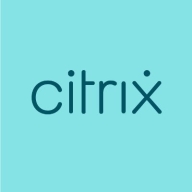

Citrix XenServer and VMware ESXi are competing in the virtualization platform market, each offering unique benefits. VMware ESXi is often seen as having an advantage due to its robust feature set and high reliability, which many users find worth the expense.
Features: Citrix XenServer provides a generous free version with strong features like XenMotion for live migration, a user-friendly Windows-based management application, and active directory integration. It supports unlimited virtual machines and caters to high performance on bare metal. VMware ESXi is known for its high reliability, VMotion for uninterrupted updates, and excellent resource management capabilities within the VMware ecosystem.
Room for Improvement: Citrix XenServer needs better Linux guest support, automatic VM startup options, and improved networking features. Its free version also lacks high availability. VMware ESXi faces challenges with its complex and pricey licensing, as well as issues with support reactivity and web interface usability.
Ease of Deployment and Customer Service: Citrix XenServer is easier and more cost-effective for on-premises deployment, although support can sometimes be lacking in promptness. VMware ESXi requires more expertise for deployment but offers robust support, which is appreciated for its technical proficiency.
Pricing and ROI: Citrix XenServer delivers significant cost savings with its free version and economical paid tiers, appealing to cost-conscious users and smaller organizations. VMware ESXi has higher costs, especially after the Broadcom acquisition, but users frequently report satisfaction with ROI due to its extensive features and reliability.
My clients generally maintain their Citrix infrastructure without shifting, suggesting stability and reliable operation as Citrix XenServer is fully established.
With valid licenses, we can access hotfixes, service packs, knowledge base, self-help tools, diagnostics, downloads, live chat, and phone support.
They do not provide adequate support for midsize businesses.
There appear to be very few engineers at Citrix who understand the problems.
I rate the technical support from VMware as nine or ten out of ten.
In the last three or four years, we did not require any support from VMware engineers, indicating its high reliability.
Customer service and support are good; they are reachable, and at times remote support suffices.
Familiarity with Linux can enhance its performance and usability.
The solution is scalable, allowing us to scale up or down regardless of infrastructure size.
vCenter Server can manage up to 1,000 ESXi servers within a single UI interface, allowing extensive deployment and management capabilities.
My customers are highly satisfied with its scalability.
I haven't had any significant issues with Citrix XenServer installations over the last 10-15 years.
ESXi is stable, and our business operations depend on it year after year.
Stability rates a perfect 10.
Although the product is technically competitive, it is not widely known or used due to poor marketing.
Citrix needs to improve the hypervisor, specifically in security and performance.
We can implement high availability and live migration with pools, along with security and backup to enable role-based access control for safer management.
Providing a mobile application for remote access to ESXi servers would be beneficial.
It's not cost-effective for small users and creates a gap for alternatives, while favoring larger clients.
The cost of VMware ESXi is very high, especially after the acquisition by Broadcom, which led to price increases.
It is cheaper compared to its competitors.
Organizations save substantial money because competing solutions, such as VMware, cost double or triple.
The pricing and licensing policy of Citrix XenServer is not transparent and quite confusing.
The product is very cost-effective, though not fixed, as pricing tends to fluctuate over time.
The solution is moderately priced, not exactly cheap yet not overly expensive either.
The pricing is expensive, with the cost for customers ranging from $10,000 to $20,000 yearly.
The most valuable feature is transferring and sharing applications that allow users to move files between devices, including smartphones, tablets, and computers without needing USB cables, internet connections, or data usage.
It provides secure access to applications and resources, which is crucial for us and our clients.
It is user-friendly and easy to deploy, making it an attractive option.
Its capability to move virtual machines to physical machines is very efficient for our live environment.
As a level one or bare metal hypervisor, its unmatched scalability depends on underlying hardware, capable of managing large numbers of physical servers with one management platform.
vMotion is a daily used technology that allows us to have machines distributed across different sites while maintaining redundancy between the sites.
| Product | Market Share (%) |
|---|---|
| VMware ESXi | 1.7% |
| Citrix XenServer | 4.8% |
| Other | 93.5% |


| Company Size | Count |
|---|---|
| Small Business | 29 |
| Midsize Enterprise | 8 |
| Large Enterprise | 18 |
| Company Size | Count |
|---|---|
| Small Business | 12 |
| Midsize Enterprise | 5 |
| Large Enterprise | 14 |
Citrix XenServer provides virtualization with high availability and robust security, offering seamless VM migration and centralized management through XenCenter. Its expansive compatibility and integration enhance its appeal, particularly for SMBs.
Citrix XenServer is recognized for its user-friendly virtualization capabilities, facilitating dynamic scalability and efficient resource management. It supports a wide range of operating systems and integrates with Citrix solutions for improved operations. Businesses benefit from its affordability and ease of deployment. Despite its strengths, users seek improvements in third-party tool integration, network and backup management, and storage flexibility. High costs, limited Linux support, system complexity, technical support, and hardware compatibility remain challenges. An updated and intuitive interface is in demand for more seamless operations across platforms.
What are the key features of Citrix XenServer?In diverse industries, Citrix XenServer is leveraged for server and desktop virtualization, cloud automation, and infrastructure management. Many deploy it for virtual desktop infrastructure, application delivery, on-premises data centers, and to support Citrix application delivery like XenApp and XenDesktop. Enterprises migrating from VMware often find Citrix XenServer cost-efficient for these applications, serving as a main computing platform for enterprise applications including ERP systems and SQL Servers.
VMware ESXi serves as a hypervisor enabling virtualization by transforming physical servers into virtual infrastructures, supporting efficient server management, development, and production environments.
Organizations utilize VMware ESXi for its high availability and ability to host diverse workloads effectively. Known for stability and maturity, it efficiently handles server, networking, and storage demands, with integral features like vMotion and memory compression. ESXi integrates well with data center operations, allowing seamless resource allocation and virtual machine migration. Despite impressive capabilities, users encounter challenges with setup complexity, licensing costs, and technical support delays, leading some to explore different solutions.
What are the main features of VMware ESXi?
What benefits and ROI do organizations see with VMware ESXi?
Industries deploying VMware ESXi benefit in sectors requiring robust IT infrastructure, including finance, healthcare, and education. Its capability to support high availability and diverse workloads proves essential for critical applications, enhancing productivity and agility in dynamic environments.
We monitor all Server Virtualization Software reviews to prevent fraudulent reviews and keep review quality high. We do not post reviews by company employees or direct competitors. We validate each review for authenticity via cross-reference with LinkedIn, and personal follow-up with the reviewer when necessary.